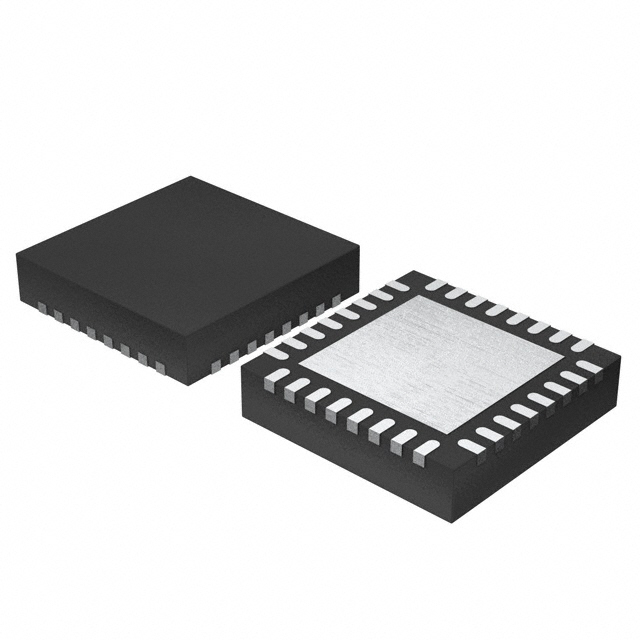Xem thông số kỹ thuật để biết chi tiết sản phẩm.

LTC3810IUH-5#PBF
Product Overview
Category
LTC3810IUH-5#PBF belongs to the category of integrated circuits (ICs).
Use
This product is commonly used in power management applications.
Characteristics
The LTC3810IUH-5#PBF is known for its high efficiency and versatility. It offers a wide input voltage range and can handle various output voltages, making it suitable for a range of applications.
Package
The LTC3810IUH-5#PBF comes in a compact and durable package, ensuring easy handling and protection against external factors.
Essence
The essence of this product lies in its ability to efficiently regulate and control power in electronic systems, ensuring stable and reliable operation.
Packaging/Quantity
The LTC3810IUH-5#PBF is typically packaged in reels or tubes, with each reel or tube containing a specific quantity of ICs. The exact packaging and quantity may vary depending on the supplier.
Specifications
The LTC3810IUH-5#PBF has the following specifications:
- Input Voltage Range: 4V to 60V
- Output Voltage Range: 0.8V to 60V
- Maximum Output Current: 20A
- Switching Frequency: Up to 500kHz
- Operating Temperature Range: -40°C to 125°C
Detailed Pin Configuration
The LTC3810IUH-5#PBF has the following pin configuration:
- VIN: Input voltage pin
- GND: Ground pin
- FB: Feedback pin
- COMP: Compensation pin
- SS/TRK: Soft-start/Tracking pin
- VCC: Supply voltage pin
- PGND: Power ground pin
- SW: Switch pin
- SYNC: Synchronization pin
Functional Features
The LTC3810IUH-5#PBF offers the following functional features:
- Wide input voltage range allows for compatibility with various power sources.
- High efficiency ensures minimal power loss during operation.
- Adjustable output voltage enables flexibility in meeting specific system requirements.
- Soft-start function prevents excessive inrush current during startup.
- Synchronization capability allows for synchronization with an external clock signal.
Advantages and Disadvantages
Advantages
- High efficiency leads to energy savings and reduced heat generation.
- Versatile input and output voltage ranges provide flexibility in design.
- Compact package allows for space-saving integration into electronic systems.
- Soft-start function protects components from excessive stress during startup.
Disadvantages
- Limited maximum output current may not be suitable for high-power applications.
- Higher cost compared to some alternative models.
Working Principles
The LTC3810IUH-5#PBF operates based on a pulse-width modulation (PWM) control scheme. It regulates the output voltage by adjusting the duty cycle of the switching signal. This control mechanism ensures that the desired output voltage is maintained within specified limits, even with variations in input voltage and load conditions.
Detailed Application Field Plans
The LTC3810IUH-5#PBF finds applications in various fields, including:
- Industrial automation: Power management in industrial control systems.
- Automotive electronics: Voltage regulation in automotive electronic systems.
- Telecommunications: Power supply for communication equipment.
- Renewable energy: Control of power conversion in solar or wind energy systems.
- Consumer electronics: Voltage regulation in portable devices and appliances.
Detailed and Complete Alternative Models
Some alternative models to the LTC3810IUH-5#PBF include:
- LT8610ABEUJ#PBF
- LT3845AEMSE#PBF
- LT8609SIV#PBF
- LT8610EMSE#PBF
These models offer similar functionality and can be considered as alternatives based on specific requirements.
In conclusion, the LTC3810IUH-5#PBF is a versatile integrated circuit used for power management applications. Its high efficiency, wide input/output voltage range, and compact package make it suitable for various fields such as industrial automation, automotive electronics, telecommunications, renewable energy, and consumer electronics. While it has advantages like high efficiency and flexibility, it also has limitations in terms of maximum output current and cost. Understanding its pin configuration, functional features, working principles, and alternative models helps in utilizing this product effectively in different applications.
Liệt kê 10 câu hỏi và câu trả lời thường gặp liên quan đến ứng dụng LTC3810IUH-5#PBF trong giải pháp kỹ thuật
Sure! Here are 10 common questions and answers related to the application of LTC3810IUH-5#PBF in technical solutions:
Q: What is LTC3810IUH-5#PBF? A: LTC3810IUH-5#PBF is a specific model of a high-performance synchronous step-down DC/DC controller IC.
Q: What is the input voltage range for LTC3810IUH-5#PBF? A: The input voltage range for LTC3810IUH-5#PBF is typically between 4.5V and 60V.
Q: What is the output voltage range for LTC3810IUH-5#PBF? A: The output voltage range for LTC3810IUH-5#PBF can be adjusted from 0.8V to VIN.
Q: What is the maximum output current that LTC3810IUH-5#PBF can handle? A: LTC3810IUH-5#PBF can handle a maximum output current of up to 20A.
Q: What is the efficiency of LTC3810IUH-5#PBF? A: The efficiency of LTC3810IUH-5#PBF can reach up to 95% under certain operating conditions.
Q: Can LTC3810IUH-5#PBF be used in automotive applications? A: Yes, LTC3810IUH-5#PBF is suitable for automotive applications as it meets the necessary standards and requirements.
Q: Does LTC3810IUH-5#PBF have built-in protection features? A: Yes, LTC3810IUH-5#PBF includes various protection features such as overvoltage protection, overcurrent protection, and thermal shutdown.
Q: What is the operating temperature range for LTC3810IUH-5#PBF? A: The operating temperature range for LTC3810IUH-5#PBF is typically between -40°C and 125°C.
Q: Can LTC3810IUH-5#PBF be used in battery charging applications? A: Yes, LTC3810IUH-5#PBF can be used in battery charging applications due to its high efficiency and adjustable output voltage.
Q: Are there any evaluation boards or reference designs available for LTC3810IUH-5#PBF? A: Yes, Linear Technology (now part of Analog Devices) provides evaluation boards and reference designs for LTC3810IUH-5#PBF to assist with its implementation in various technical solutions.
Please note that the answers provided here are general and may vary depending on specific application requirements and conditions. It is always recommended to refer to the datasheet and consult with the manufacturer for detailed information and guidance.

